A121 Orion 120 ED Doublet (vermutlich gleicher Hersteller in China wie Equinox)
One more Equinox?
The last weeks I've got serveral ED-Doublets 120/900 and I assume indeed, these must
be always the same producer from China. So the SkyWatcher Equinox 120/900 (http://www.astro-foren.de/showthread.php?t=10190)with a
reduced aperture of 113 mm (http://www.astro-foren.de/showthread.php?p=39987#post39987), because the (http://rohr.aiax.de/Baffle placement.mht)baffle system (http://rohr.aiax.de/Baffle placement.mht)is reducing the 120 mm to 113 mm,
or the EvoStar 120/900 (http://www.astro-foren.de/showpost.php?p=39234&postcount=3)with the same optical system, and now this Orion Optics, USA,
and this ED 120 refractor. The characteristics of all are very closed together, as I will
show with the next fotos. This one will show just the optic without the tube and the
baffle system.
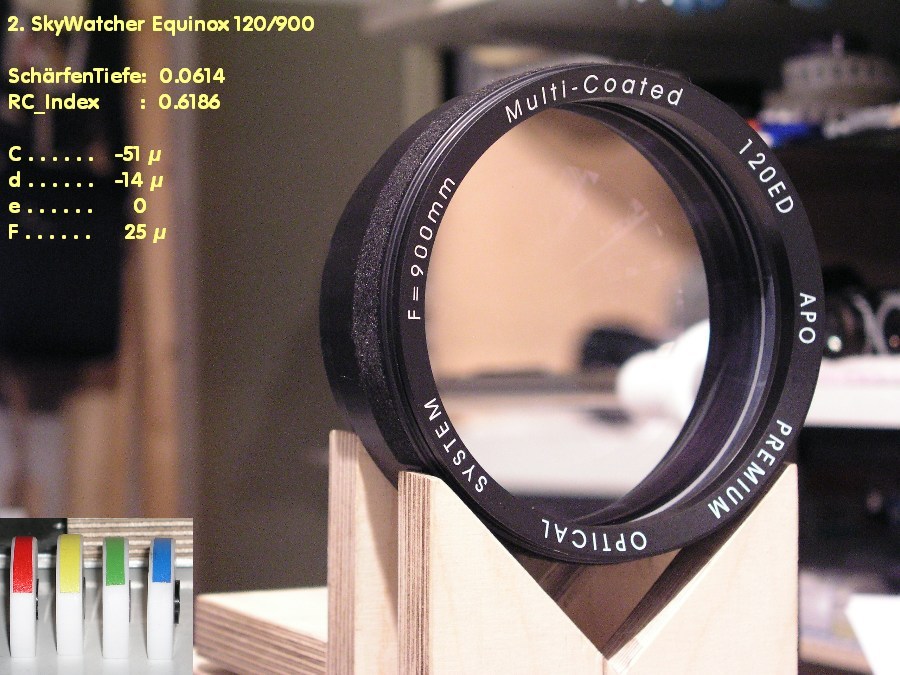
EvoStar 120
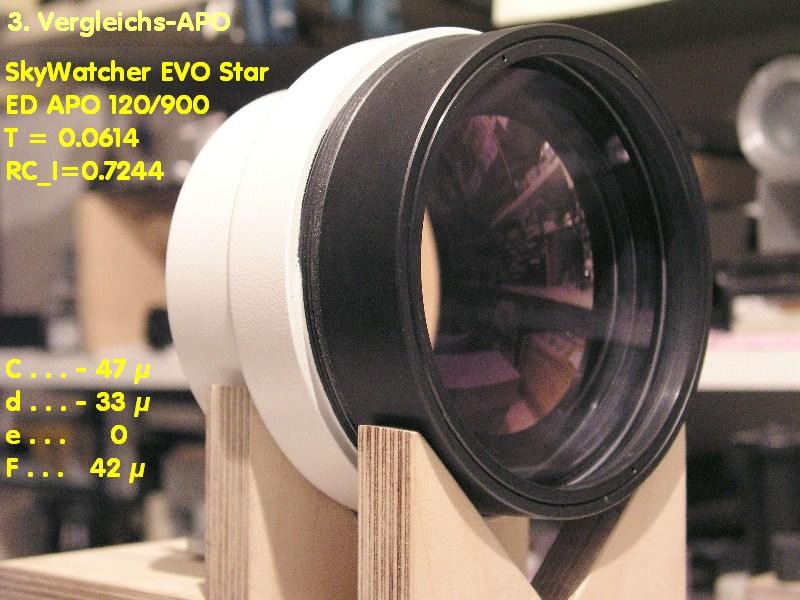
Orion ED 120
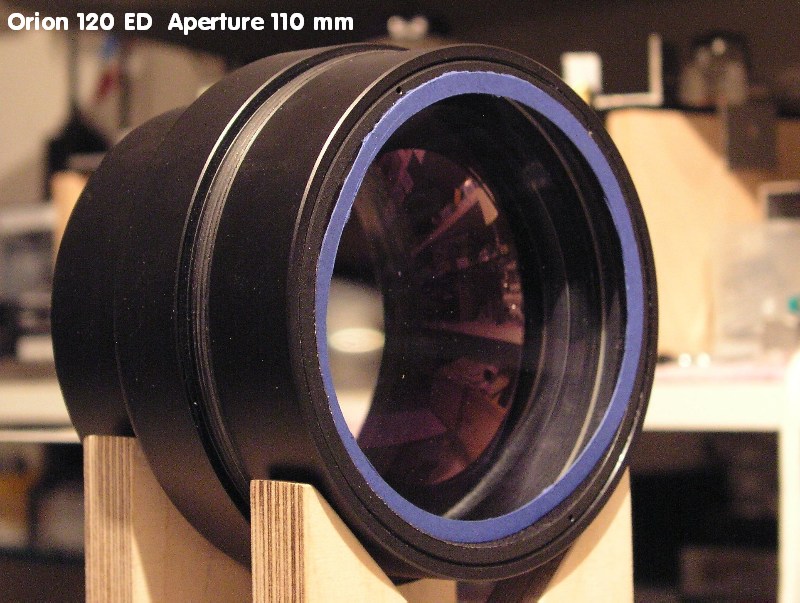

In this case you get just 118 mm for the aperture. See also: http://www.astro-foren.de/showthread.php?p=39987#post39987
The vignetting effect is caused by the last rings near the eyepiece and you can notice that by
testing with Foucault and interferograms. Then the slides become an elliptic shape.
Conclusion: This refractor works on axis very good, but in the field with vignetting the light cone.

And this is the baffle system (http://rohr.aiax.de/Baffle placement.mht)of that ED lens. http://www.berfield.com/baffles.html
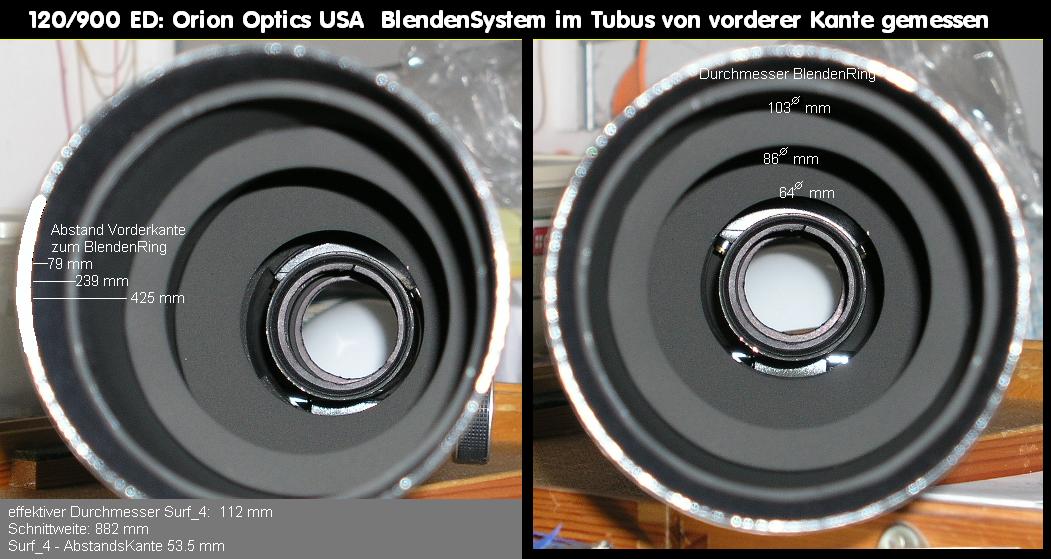
Now let's compare the secondary spectrum of these three optics. The color sequence of the focus
difference is the same, red, yellow, green and blue. So the rest chromatic index number is not
very different. See also here: http://www.astro-foren.de/showthread.php?t=7713
With this RC_Index number you can distinguish between an achromatic lens, an half apochromatic
and a full apochromatic one and it is calculated with the difference of the color focus and the
depth of sharpness (Airy disc and aperture relation) So the next foto shows three related systems.
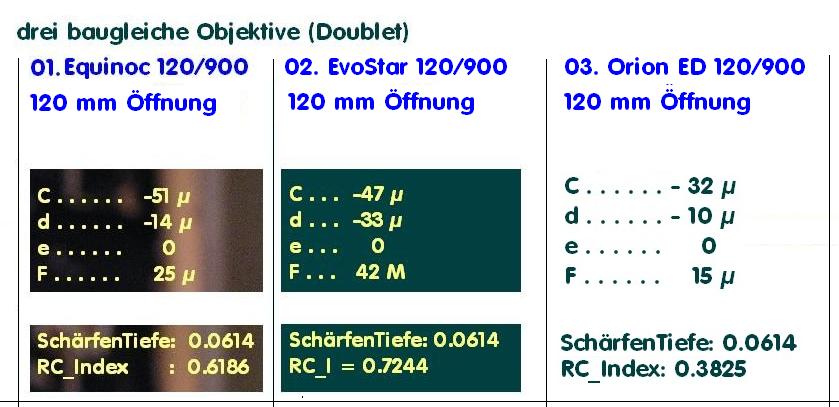
Reminding at this report (http://www.astro-foren.de/showthread.php?p=39987#post39987) I reduced the 120 mm to 110 mm and how this vary my testing results.

This shows the differences with 110 aperture and 120 aperture. The RC_Index-Number becomes
much better. But one problem of this algorhytmus is, that it does'nt respect the Gauß error, this
is the spherical aberration of the different spectral colors: So blue should be overcorrected and
red should be undercorrected, but green should be perfect. The lines at right show the middle
fringe of the map.
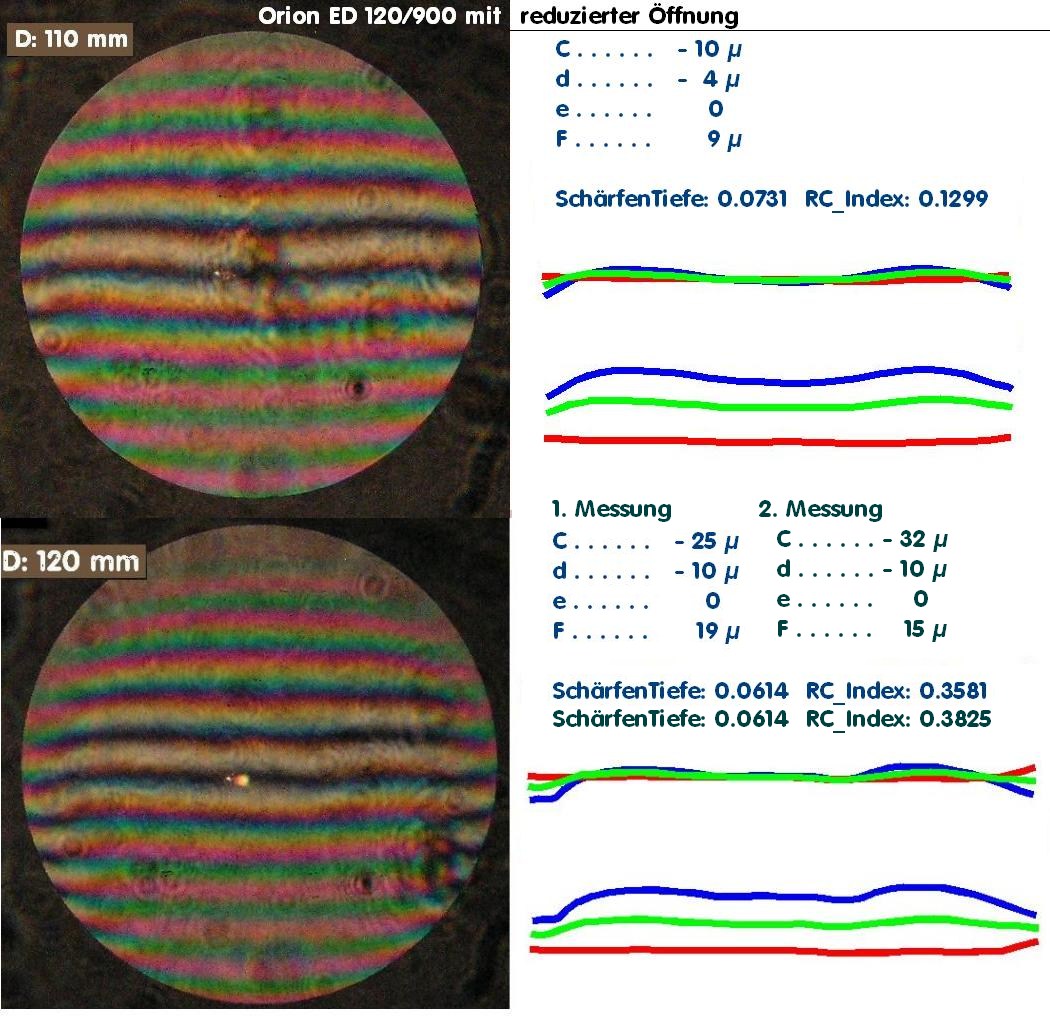
All color informations are hide in the first fringes map: overcorrected in blue und undercorrected in red
and the difference with 120 mm and 110 mm aperture
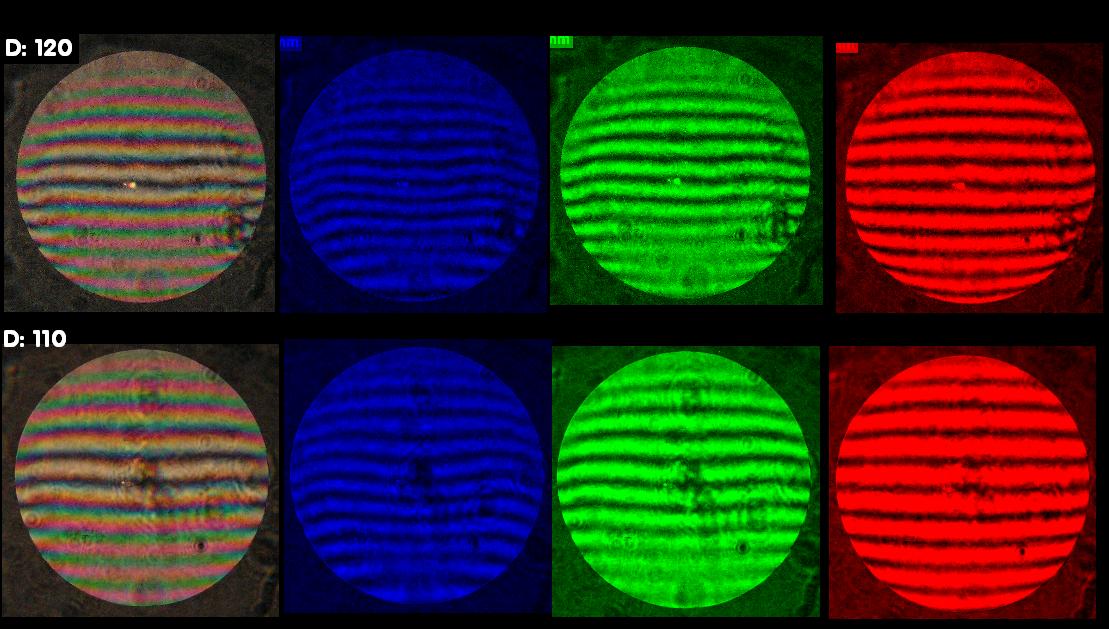
This foto shows how closed together the color characteristic are with the Equinox refractor.
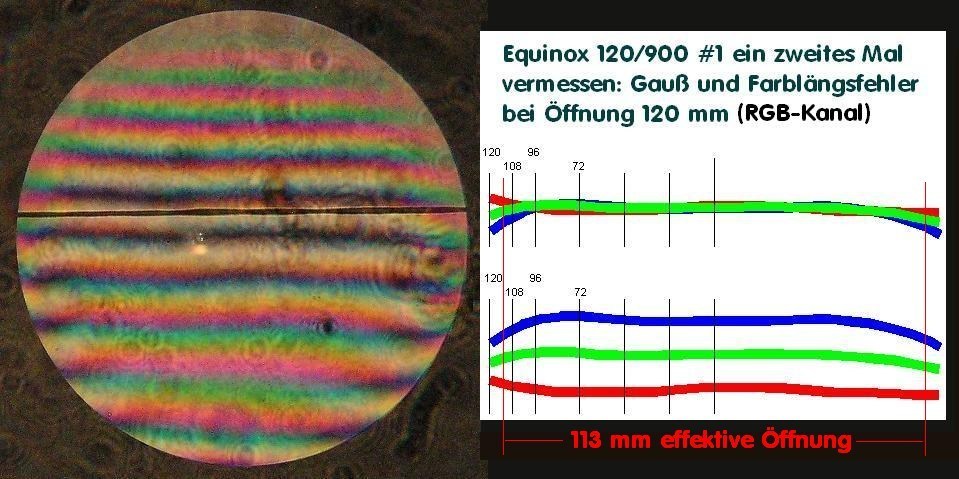
Now the Orion ED 120 itself. If you take the colored Ronchi map, you can split this in the RGB colors.
And this shows the overcorrection in blue and the undercorrection in red. And vertical you notice
a coma of a small misalignment - the main error of this system.
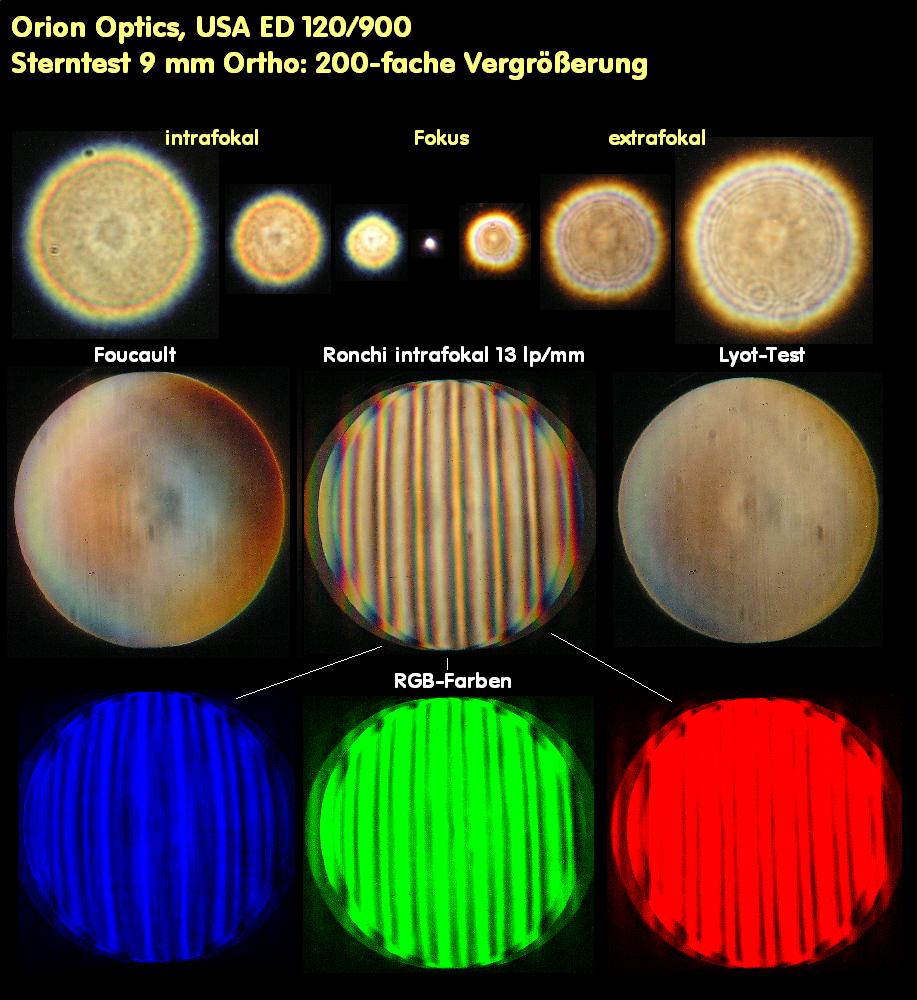
The Foucault test shows the overcorrected optic in blue and the undercorrected in red
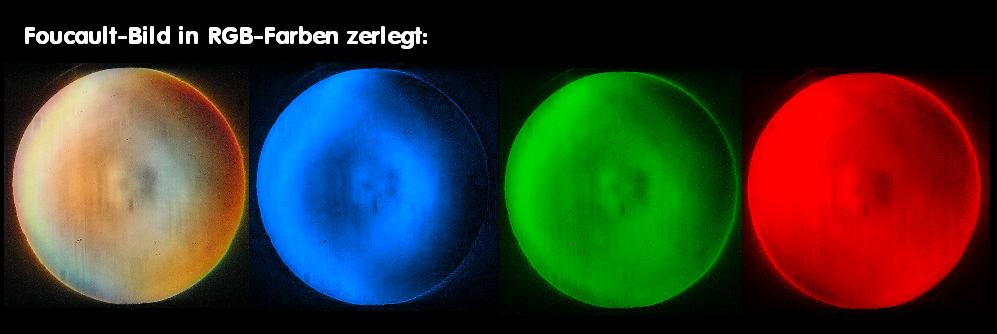
the situation with the star test

The coma error you see it with high magnification vertical. The pinholes of my artificial sky (http://www.astro-foren.de/showthread.php?t=7874)
are 3 till 5 microns.
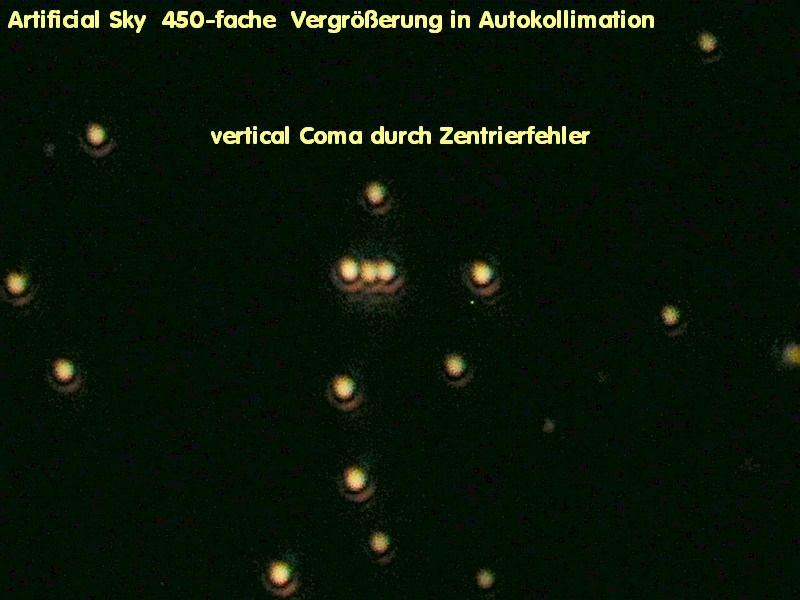
So this optics could be a high quality doublet one and without coma the Strehl value is 0.987
at the optimum of 587.6 nm wave (yellow)

The last weeks we had an enlarged discussion by comparing a Doublet ED APO with a Triplet APO.
See this report here: http://www.astro-foren.de/showthread.php?p=39438#post39438
So the problem is how to calculate the Gauß error difference in the RC_Index algorhytmus.
This illustration shows the difference between this ED APO Doublet and a TMB APO triplet.
The Gauß error decrease if you design an optical system with three lenses.
Nevertheless the hobby astronomer is very satisfied with this ED doublet refractor, but he asked
me for analysing this with my methods.
